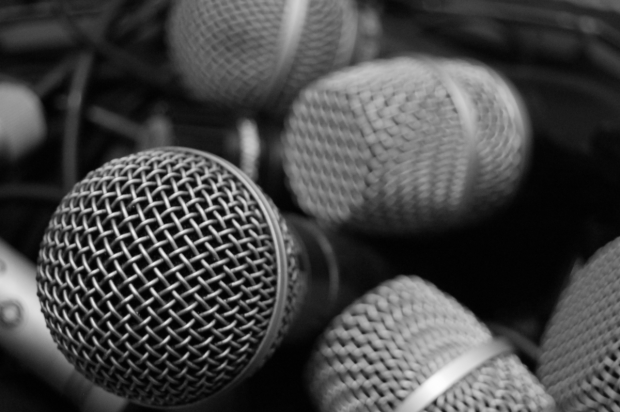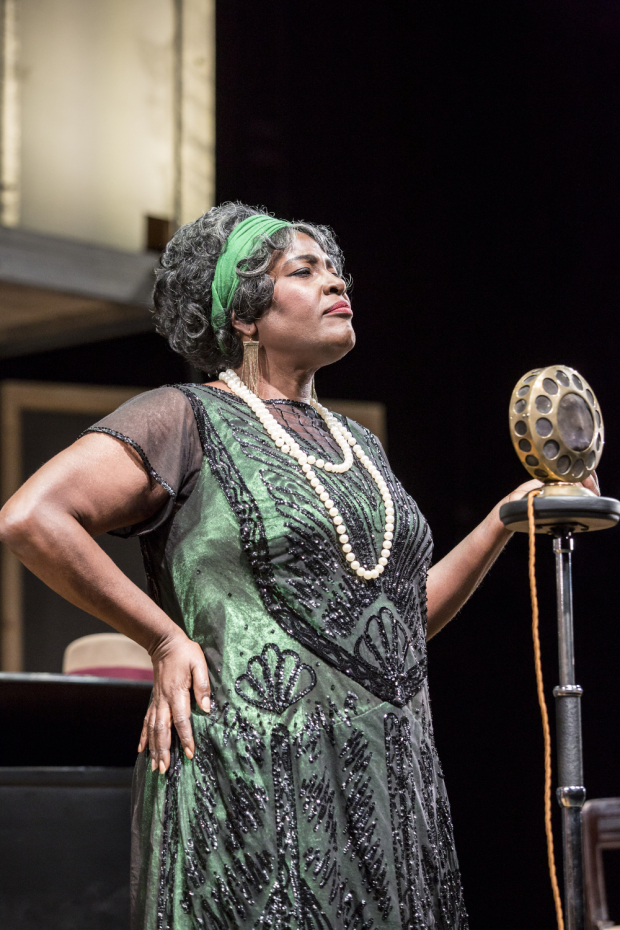Michael Coveney: Sound bites back

© Rusty Sheriff/Flickr
One of the un-lauded aspects of the magnificent revival of Ma Rainey's Black Bottom at the National is the sound design by Paul Arditti which matches, seamlessly, the "playing" of the onstage blues and jazz quartet with a backing track. But this technical miracle struck me as an exception to the norm these days.
Towards the end of last year I grumbled about micro-phoned actors in straight plays (Waste at the National, the Chichester Chekhovs), the membrane of artificial noise you get in many musicals – not just me, but Matthew Parris, a Times columnist, went public on the grating loudness of Guys and Dolls at the Savoy – and the lack of pure acoustic sound germane to opera and tiny fringe spaces.
Voicing the virtues of the voice led to immediate sonic feedback from two of our leading sound designers, Paul Groothuis (Guys and Dolls and those Chekhovs, this week's Rabbit Hole at Hampstead, more or less in-house at the National between 1984 and 2001) and John Leonard (Waste, Hand To God in the West End this week and recipient of a distinguished career award soon at the US wing of the Institute of Theatre Technology).
The sound budget for Disney’s upcoming Aladdin in the West End is £1.8m
Before I faced the music (amplified) with these titans, I popped into the north London HQ of Autograph, one of several sound specialist firms in the UK, co-founded in 1972 by Andrew Bruce and listened up to managing director Terry Jardine. Bruce, he says, along with Martin Levan, was the first credited sound designer on musicals such as Cats, Starlight Express, Les Misérables and Phantom.
Sound design is now everywhere, poised in impact and audience awareness between lighting and video. There used to be rifle mikes, ranged like the old footlights, along the front of the stage; now, a cast of thirty, in Les Mis or Chekhov, will be radio-miked at a cost of £3,500 per (fore)head. The sound budget for Disney’s upcoming Aladdin in the West End is £1.8m

© JOHAN PERSSON
Why? "We can't go back," says Jardine. After film, television and ear-music, people expect a different quality of sound. They like "louder," and Groothuis weighs in with the demystification argument about old actors being totally audible; they weren't he said, and he went out of his way to talk to a few before they died. He's not saying who.
John Leonard, whose sound for Richard Eyre’s award-wining Ghosts at the Almeida was a key element in the play’s symphonic tapestry – he is working with Eyre again, and Lesley Manville, on the Bristol Old Vic’s new Long Day’s Journey Into Night – says that too many actors can’t project; Groothuis suggests the problem is compounded by the fact that a "different kind of acting" is required in new plays and classics alike.
Waste‘s difficult acoustics in the Lyttelton were in part caused by Hildegard Bechtler’s set of sliding panels; there was no "box" to keep the sound on the stage. Some actors still don't like being miked, admits Paul before a technical run-through at Hampstead, but no-one demurred when it first happened in Trevor Nunn's first NT production, Ian McKellen in Ibsen's An Enemy of the People in 1991: "Ian's the opposite of an inaudible actor, but we wanted to create a sound world for his big speeches, and we wanted the crowd to be heard to make proper noises."
Even in the best designed theatres, you hear less well at the side of the stalls, or in the circles. So it's a democratic corrective even if occasionally the actor misjudges the sound level at which he should speak while miked. And the days of thunder sheets in King Lear or coconut shells in the wings for horses hooves are long gone, sound effects and music "mixed" into the overall sound, and often adjusted each night by an operator on the sound board. These guys are wizards, it turns out; every single night, every single audience, as Terry declares, is different.
In the non-commercial theatre we are attuned to such soundscape masterpieces as Simon McBurney's The Encounter, an epic journey to the heart of the Amazonian jungle on your individual headsets, coming to the Barbican this month; or Sound&Fury's sound-around Kursk, underwater in a doomed Russian submarine; or Adam Cork's brilliant mix of dialogue, sound and vernacular lyrics in London Road at the National.
But the battleground here is in the world of straight plays and musicals. Sound designers are often told to "make it louder" by their producers. That’s what audiences, especially Americans, now want. And older producers might be going deaf, I suppose. The availability of the technology has made it more difficult to resist the flight from vocal unadorned nakedness in our theatre. It seems that we are going to depend on the skill and the taste of our leading sound designers even more as time goes by.










